Example analysis of read and write operations in Java Spring
Storing bean objects
When we stored bean objects before, we needed to add a line of beans to the configuration file to inject them

This injection method is not good. If there is an error in the configuration file, the program will not display the error message. This is very unfriendly to beginners.
1. Create a project
Create startup class and main method

Introduce dependencies

<dependencies>
<dependency>
<groupId>org.springframework</groupId>
<artifactId>spring-context</artifactId>
<version>5.2.3.RELEASE</version>
</dependency>
<dependency>
<groupId>org.springframework</groupId>
<artifactId>spring-beans</artifactId>
<version>5.2.3.RELEASE</version>
</dependency>
</dependencies>Create configuration file
We agreed that the bean object to be created will be placed under the com.bean package:

<dependencies>
<dependency>
<groupId>org.springframework</groupId>
<artifactId>spring-context</artifactId>
<version>5.2.3.RELEASE</version>
</dependency>
<dependency>
<groupId>org.springframework</groupId>
<artifactId>spring-beans</artifactId>
<version>5.2.3.RELEASE</version>
</dependency>
</dependencies>2. Add annotations to store beans in the container
The core of using Spring is to use annotations. There are 5 annotations we have learned.
@Controller [Controller] @Service [Service] @Repository [Warehouse] @Configuration [Configuration/Layout] @Component [Component] 2.1 controller


We were able to get the object by passing in the id parameter before, but that was adding a line of beans to manually add the id, but now that we use annotations, can we only use class types? Get it?
When we use annotations to inject bean objects, the id actually defaults to the camel case form of the class name:

The reason will not be explained first. , will be discussed later.
Easy mistakes:
We previously added the root directory for bean object search in the configuration file, which means that the search will start from this directory downwards, but not upwards :
Lower-level directory


##Superior directory

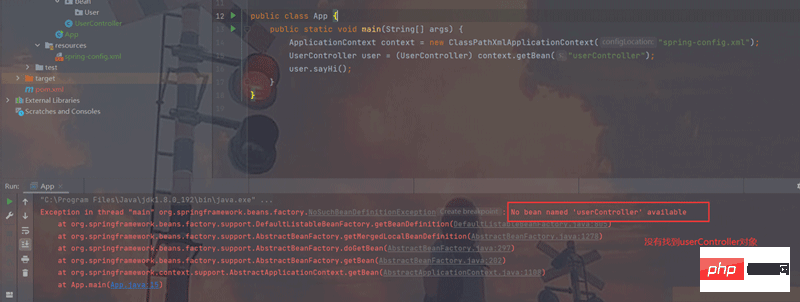 ##2.2 Service
##2.2 Service

#2.3 Repository


 ##2.5 Component
##2.5 Component

 2.6 Why are there 5 major categories of annotations
2.6 Why are there 5 major categories of annotations

in the company Everyone is responsible for different areas, so the class annotations used are also different, but the essence of the five major categories of annotations is the same.
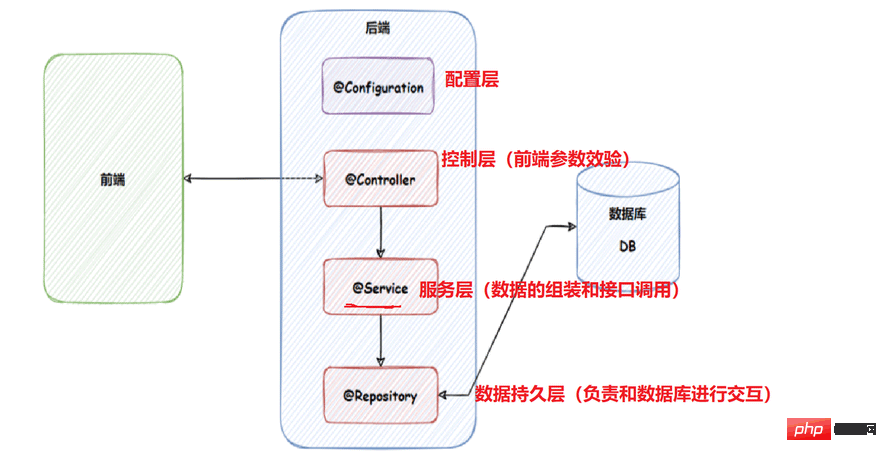
 We can clearly see through the two class annotations that the other four annotations are methods that introduce the Component annotation. In other words, Component is the father of the other four class annotations. So what does Component do? It’s just that it’s not easy to throw it into the other four classes when annotating it~
We can clearly see through the two class annotations that the other four annotations are methods that introduce the Component annotation. In other words, Component is the father of the other four class annotations. So what does Component do? It’s just that it’s not easy to throw it into the other four classes when annotating it~
2.7 Why does the id default to a small camel number
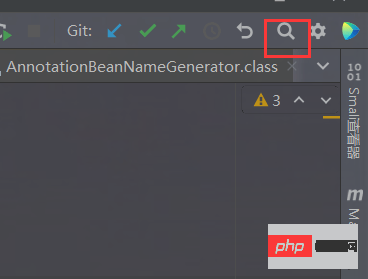
Find AnnotationBeanNameGenerator:
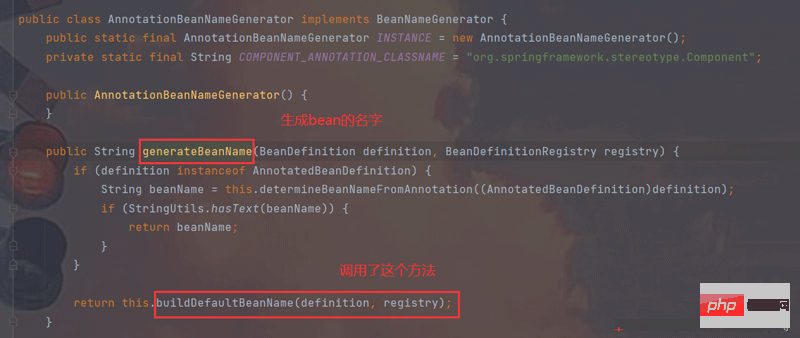

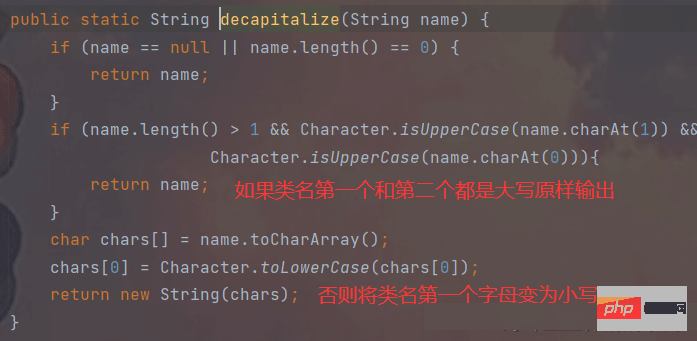
##Test:
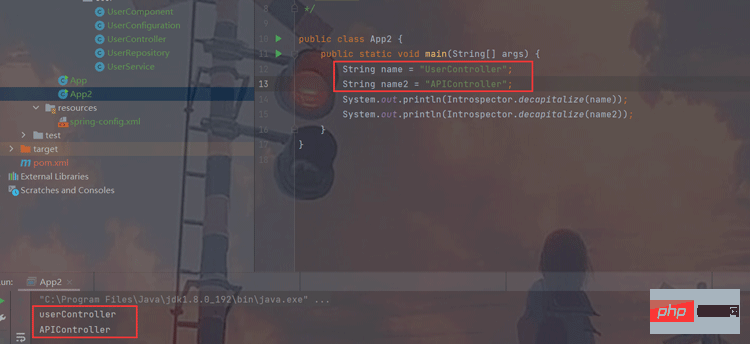
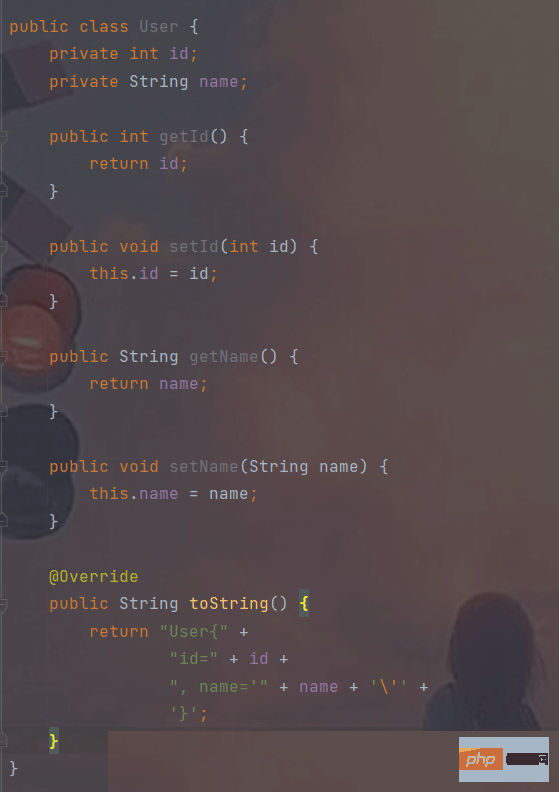
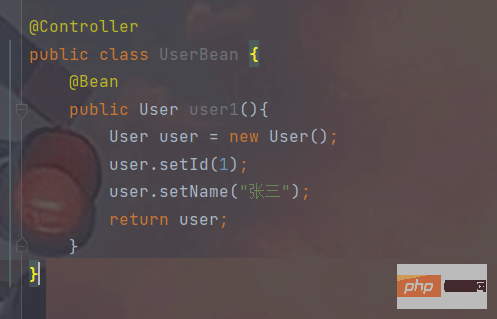

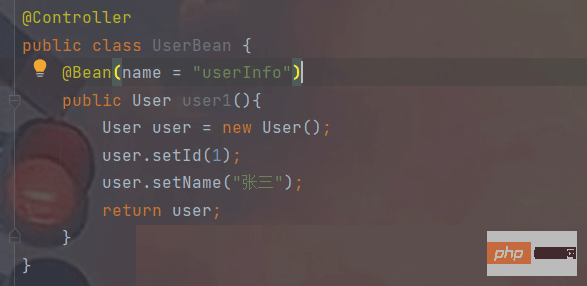
 ##2.8.2 Rename multiple
##2.8.2 Rename multiple
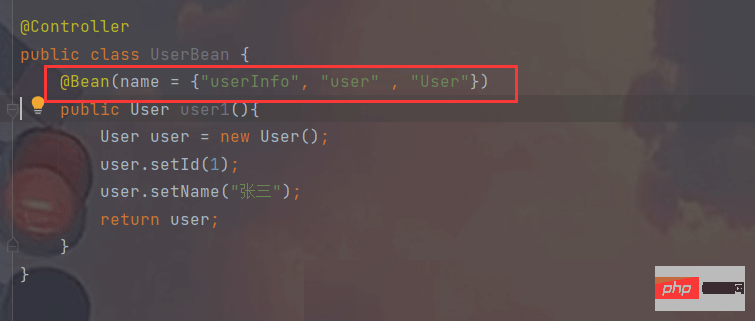

: When renaming using the name attribute, the original method name will lose its effect, which means that only the modified one can be used The name is used as the ID. Get the bean object
- Property injection
- Constructor injection
- Setter injection
- 1. Property injection
1.1 Autowired

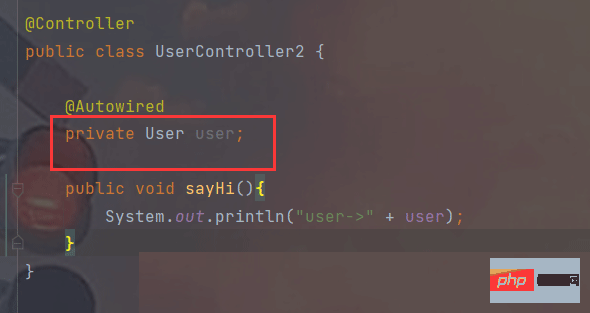
 ##Although there seems to be no problem now, when we Objects of the same type have been injected multiple times:
##Although there seems to be no problem now, when we Objects of the same type have been injected multiple times:

At this time, you need to accurately locate the selected object. 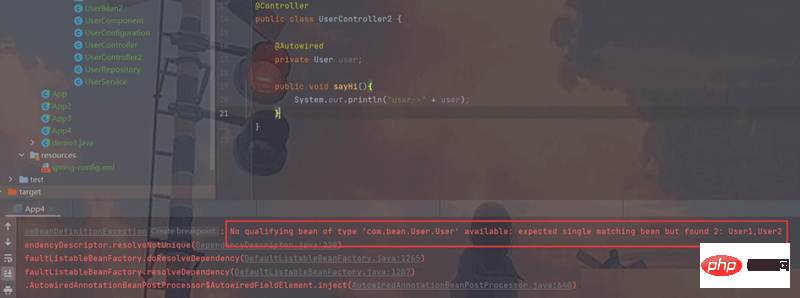 Type name
Type name
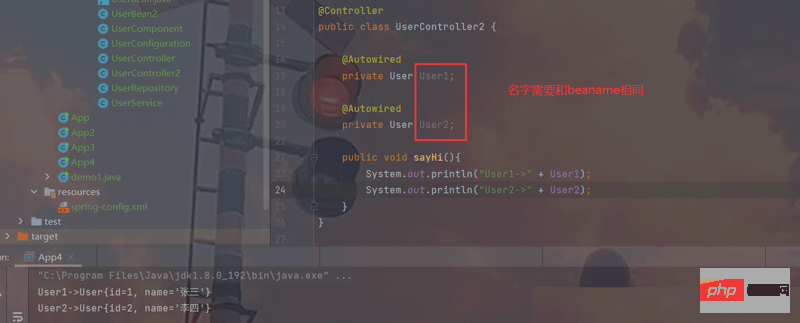
 Resource has a name attribute, which can specify the name of the injected bean
Resource has a name attribute, which can specify the name of the injected bean
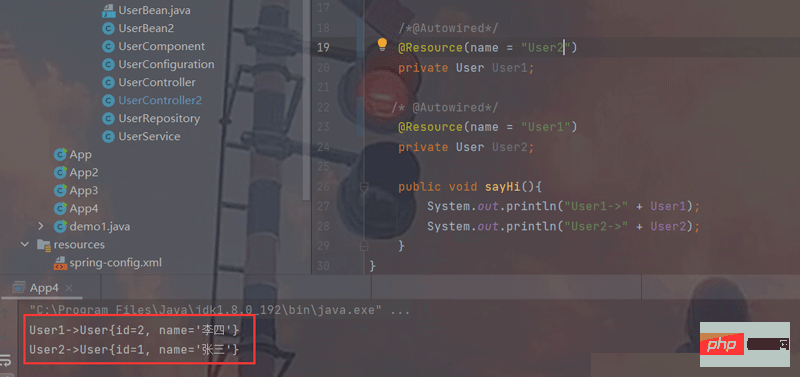
ps : The Autowired annotation initially queries all types for the types of objects that need to be injected. However, Autowired can only inject one object at a time, so an error will be reported when an object of the same type is injected multiple times. The Qualifier annotation essentially filters the results of its query.
: The Autowired annotation initially queries all types for the types of objects that need to be injected. However, Autowired can only inject one object at a time, so an error will be reported when an object of the same type is injected multiple times. The Qualifier annotation essentially filters the results of its query.
2. Constructor injection
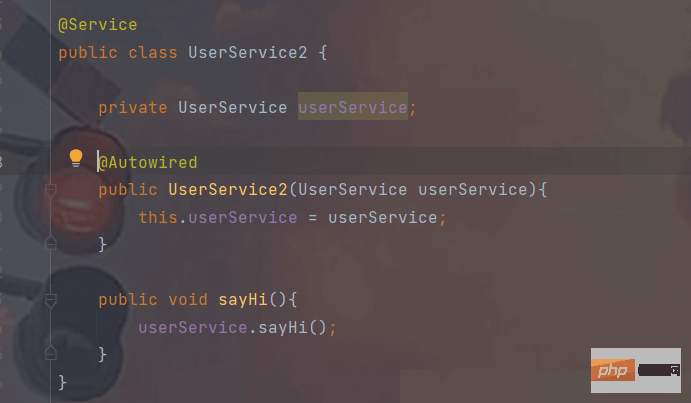
: When there is only one constructor, Autowired can be omitted
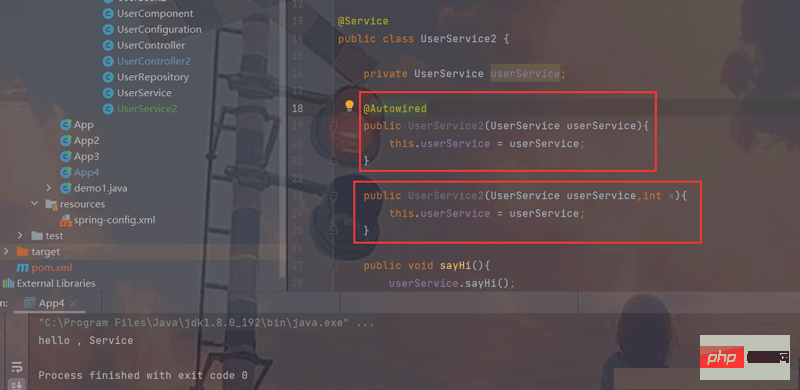
Setter injection
or through Autowired
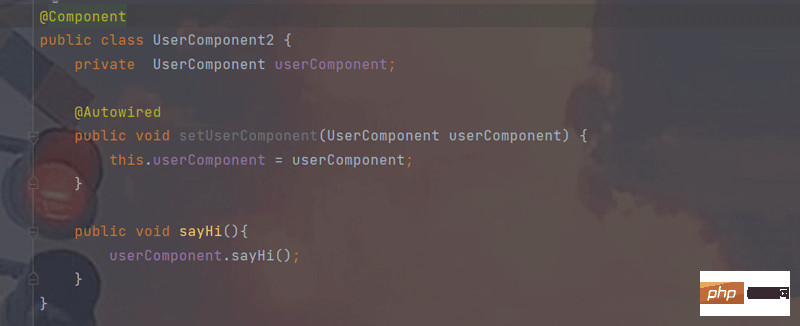

## Resource also supports Setter injection.
What are the differences between property injection, constructor injection, and Setter injection?
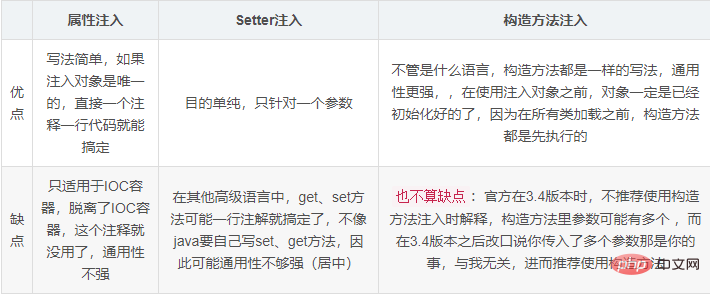
The above is the detailed content of Example analysis of read and write operations in Java Spring. For more information, please follow other related articles on the PHP Chinese website!

Hot AI Tools

Undresser.AI Undress
AI-powered app for creating realistic nude photos

AI Clothes Remover
Online AI tool for removing clothes from photos.

Undress AI Tool
Undress images for free

Clothoff.io
AI clothes remover

Video Face Swap
Swap faces in any video effortlessly with our completely free AI face swap tool!

Hot Article

Hot Tools

Notepad++7.3.1
Easy-to-use and free code editor

SublimeText3 Chinese version
Chinese version, very easy to use

Zend Studio 13.0.1
Powerful PHP integrated development environment

Dreamweaver CS6
Visual web development tools

SublimeText3 Mac version
God-level code editing software (SublimeText3)

Hot Topics
 1386
1386
 52
52
 Perfect Number in Java
Aug 30, 2024 pm 04:28 PM
Perfect Number in Java
Aug 30, 2024 pm 04:28 PM
Guide to Perfect Number in Java. Here we discuss the Definition, How to check Perfect number in Java?, examples with code implementation.
 Weka in Java
Aug 30, 2024 pm 04:28 PM
Weka in Java
Aug 30, 2024 pm 04:28 PM
Guide to Weka in Java. Here we discuss the Introduction, how to use weka java, the type of platform, and advantages with examples.
 Smith Number in Java
Aug 30, 2024 pm 04:28 PM
Smith Number in Java
Aug 30, 2024 pm 04:28 PM
Guide to Smith Number in Java. Here we discuss the Definition, How to check smith number in Java? example with code implementation.
 Java Spring Interview Questions
Aug 30, 2024 pm 04:29 PM
Java Spring Interview Questions
Aug 30, 2024 pm 04:29 PM
In this article, we have kept the most asked Java Spring Interview Questions with their detailed answers. So that you can crack the interview.
 Break or return from Java 8 stream forEach?
Feb 07, 2025 pm 12:09 PM
Break or return from Java 8 stream forEach?
Feb 07, 2025 pm 12:09 PM
Java 8 introduces the Stream API, providing a powerful and expressive way to process data collections. However, a common question when using Stream is: How to break or return from a forEach operation? Traditional loops allow for early interruption or return, but Stream's forEach method does not directly support this method. This article will explain the reasons and explore alternative methods for implementing premature termination in Stream processing systems. Further reading: Java Stream API improvements Understand Stream forEach The forEach method is a terminal operation that performs one operation on each element in the Stream. Its design intention is
 TimeStamp to Date in Java
Aug 30, 2024 pm 04:28 PM
TimeStamp to Date in Java
Aug 30, 2024 pm 04:28 PM
Guide to TimeStamp to Date in Java. Here we also discuss the introduction and how to convert timestamp to date in java along with examples.
 Java Program to Find the Volume of Capsule
Feb 07, 2025 am 11:37 AM
Java Program to Find the Volume of Capsule
Feb 07, 2025 am 11:37 AM
Capsules are three-dimensional geometric figures, composed of a cylinder and a hemisphere at both ends. The volume of the capsule can be calculated by adding the volume of the cylinder and the volume of the hemisphere at both ends. This tutorial will discuss how to calculate the volume of a given capsule in Java using different methods. Capsule volume formula The formula for capsule volume is as follows: Capsule volume = Cylindrical volume Volume Two hemisphere volume in, r: The radius of the hemisphere. h: The height of the cylinder (excluding the hemisphere). Example 1 enter Radius = 5 units Height = 10 units Output Volume = 1570.8 cubic units explain Calculate volume using formula: Volume = π × r2 × h (4
 Create the Future: Java Programming for Absolute Beginners
Oct 13, 2024 pm 01:32 PM
Create the Future: Java Programming for Absolute Beginners
Oct 13, 2024 pm 01:32 PM
Java is a popular programming language that can be learned by both beginners and experienced developers. This tutorial starts with basic concepts and progresses through advanced topics. After installing the Java Development Kit, you can practice programming by creating a simple "Hello, World!" program. After you understand the code, use the command prompt to compile and run the program, and "Hello, World!" will be output on the console. Learning Java starts your programming journey, and as your mastery deepens, you can create more complex applications.




